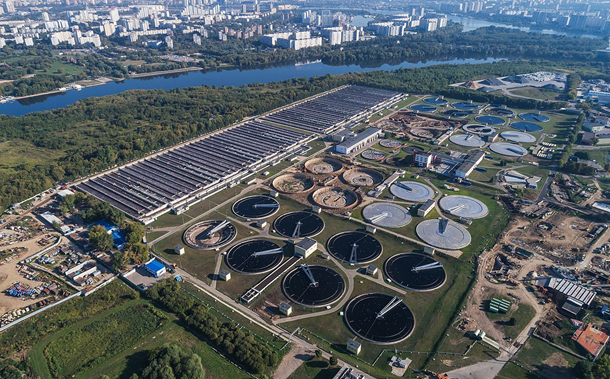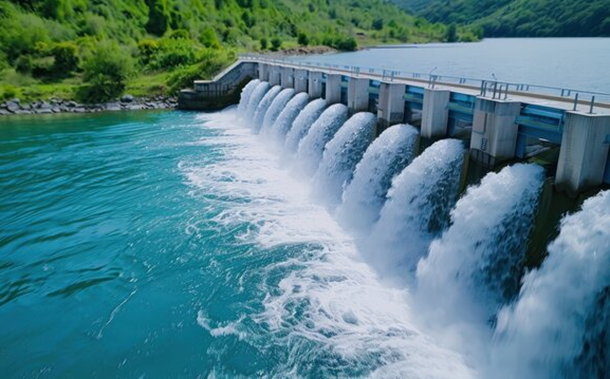Rainfall-Runoff Modeling in a Regional Watershed Using the MIKE 11-NAM Model
Downloads
Doi:10.28991/CEJ-2024-010-12-08
Full Text:PDF
Downloads
[2] Sajadi Bami, Y., Porhemmat, J., Sedghi, H., & Jalalkamali, N. (2020). Performance Evaluation of Mike Nam Rainfall-Runoff (R-R) Model in Daily Flow Simulation (Case Study: Gonbad Catchment in Hamedan). Journal of Applied Engineering Sciences, 10(1), 1–6. doi:10.2478/jaes-2020-0001.
[3] Zewdie Werede, K., Kumar Lohani, T., Gebremariam Neka, B., & Bereta Geremew, G. (2024). Assessing the impacts of climate change on streamflow in the upper Omo Gibe basin of Southwest Ethiopia using MIKE NAM. International Journal of River Basin Management, 1–17. doi:10.1080/15715124.2024.2365323.
[4] DHI. (2017). Mike Zero User's Guide. DHI Water & Environment, Harsholm, Denmark.
[5] Nannawo, A. S., Lohani, T. K., Eshete, A. A., & Ayana, M. T. (2022). Evaluating the dynamics of hydroclimate and streamflow for data-scarce areas using MIKE11-NAM model in Bilate river basin, Ethiopia. Modeling Earth Systems and Environment, 8(4), 4563–4578. doi:10.1007/s40808-022-01455-x.
[6] Hafezparast, M. (2013). A Conceptual Rainfall-Runoff Model Using the Auto Calibrated NAM Models in the Sarisoo River. Journal of Waste Water Treatment & Analysis, 4(1), 1–6. doi:10.4172/2157-7587.1000148.
[7] Singh, A., Singh, S., Nema, A. K., Singh, G., & Gangwar, A. (2014). Rainfall-Runoff Modeling Using MIKE 11 NAM Model for Vinayakpur Intercepted Catchment, Chhattisgarh. Indian Journal of Dryland Agricultural Research and Development, 29(2), 1. doi:10.5958/2231-6701.2014.01206.8.
[8] Belachew T. M. (2018) Impact of climate change on flood frequency of Tegona River, Ethiopia. Master Thesis, Arba Minch University, Arba Minch, Ethiopia.
[9] Kumar, P., Lohani, A. K., & Nema, A. K. (2019). Rainfall Runoff Modeling Using MIKE 11 Nam Model. Current World Environment, 14(1), 27–36. doi:10.12944/cwe.14.1.05.
[10] Ghebrehiwot, A. A., & Kozlov, D. V. (2020). Assessment of applicability of mike 11-nam hydrological module for rainfall runoff modelling in a poorly studied river basin. Vestnik MGSU, 7(7), 1030–1046. doi:10.22227/1997-0935.2020.7.1030-1046.
[11] Lafdani, E. K., Nia, A. M., Pahlavanravi, A., Ahmadi, A., & Jajarmizadeh, M. (2013). Research article daily rainfall-runoff prediction and simulation using ANN, ANFIS and conceptual hydrological MIKE11/NAM models. International Journal of Engineering & Technology Sciences, 1(1), 32-50.
[12] Makungo, R., Odiyo, J. O., Ndiritu, J. G., & Mwaka, B. (2010). Rainfall-runoff modelling approach for ungauged catchments: A case study of Nzhelele River sub-quaternary catchment. Physics and Chemistry of the Earth, 35(13–14), 596–607. doi:10.1016/j.pce.2010.08.001.
[13] Aherwar, P., & Aherwar, H. (2019). Comparison of rainfall runoff simulation by SCS-CN and NAM model in Shipra river basin of Madhya Pradesh, India. Journal of Pharmacognosy and Phytochemistry, 8(4), 3419-3427.
[14] Nguyen, N. Y., Kha, D. D., & Hat, D. T. T. (2023). Climate Change Impact on the Streamflow for the Nam Ou Catchment, North Laos in the Mekong Basin. Journal of Ecological Engineering, 24(8), 209–217. doi:10.12911/22998993/166386.
[15] Dhruw, G., Agrawal, N., & Jaiswal, R. K. (2024). Rainfall-runoff Modelling Using MIKE11 NAM Model for Ravishankar Sagar Catchment, Chhattisgarh, India. International Journal of Environment and Climate Change, 14(4), 719–738. doi:10.9734/ijecc/2024/v14i44153.
[16] Kumar, M., Tiwari, R. K., Kumar, K., Rautela, K. S., & Safi, S. (2024). Quantitative analysis of hydropower potential in the upper Beas basin using geographical information system and MIKE 11 Nedbor Afrstromnings Model (NAM). Ecohydrology, 17(4). doi:10.1002/eco.2618.
[17] S. K, T. (2016). Modeling of a Greater-Zab River Watershed Using Arc SWAT for Stream Flow and Hydrologic Budget. Engineering and Technology Journal, 34(8), 1514–1529. doi:10.30684/etj.34.8a.4.
[18] Yapo, P. O., Gupta, H. V., & Sorooshian, S. (1996). Automatic calibration of conceptual rainfall-runoff models: sensitivity to calibration data. Journal of Hydrology, 181(1–4), 23–48. doi:10.1016/0022-1694(95)02918-4.
[19] Liu, Y., & Sun, F. (2010). Sensitivity analysis and automatic calibration of a rainfall–runoff model using multi-objectives. Ecological Informatics, 5(4), 304–310. doi:10.1016/j.ecoinf.2010.04.006.
[20] Amir, M. S. I. I., Khan, M. M. K., Rasul, M. G., Sharma, R. H., & Akram, F. (2013). Automatic Multi-Objective Calibration of a Rainfall Runoff Model for the Fitzroy Basin, Queensland, Australia. International Journal of Environmental Science and Development, 4(3), 311–315. doi:10.7763/ijesd.2013.v4.361.
[21] Singh, J., Knapp, H. V., Arnold, J. G., & Demissie, M. (2005). Hydrological modeling of the Iroquois River watershed using HSPF and SWAT. Journal of the American Water Resources Association, 41(2), 343–360. doi:10.1111/j.1752-1688.2005.tb03740.x.
[22] Santhi, C., Arnold, J. G., Williams, J. R., Dugas, W. A., Srinivasan, R., & Hauck, L. M. (2001). Validation of the Swat Model on a Large Rwer Basin with Point and Nonpoint Sources. JAWRA Journal of the American Water Resources Association, 37(5), 1169–1188. doi:10.1111/j.1752-1688.2001.tb03630.x.
- Authors retain all copyrights. It is noticeable that authors will not be forced to sign any copyright transfer agreements.
- This work (including HTML and PDF Files) is licensed under a Creative Commons Attribution 4.0 International License.![]()














